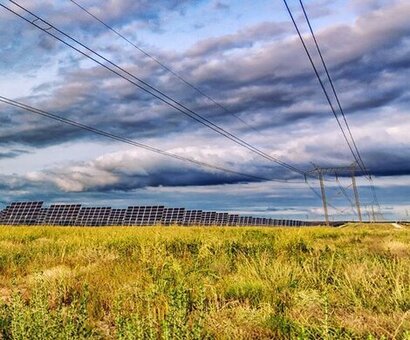
Under these memorandums of understanding (MOU), NYSERDA, through its Build-Ready Programme, will work closely with Tompkins County in the Southern Tier and Niagara County in Western New York to explore the feasibility of developing renewable energy projects on otherwise underutilised sites, including a landfill and unused land surrounding an active airport.
The announcement represents progress under the State’s Accelerated Renewable Energy Growth and Community Benefit Act and advances New York’s goal for 70 percent of the state’s electricity to come from renewable sources by 2030 under the Climate Leadership and Community Protection Act.
“Our Build-Ready Programme is part of New York’s comprehensive approach to accelerating the development of large-scale renewable energy projects and will help bring forward unique projects that stimulate local and regional economic growth” said Doreen M. Harris, President and CEO, NYSERDA. “Today’s agreements are an important step in understanding the practicality of transitioning these sites into revenue-generating renewable energy facilities, and we look forward to working with these local partners to help them capitalise on the significant economic and environmental benefits these projects will bring to their communities.”
The first MOU was executed by NYSERDA with Tompkins County in relation to the county-owned Ithaca Tompkins International Airport, located in Lansing, NY. The 67-acre area northeast of the airport runways identified by the airport and county are being considered for hosting a solar and battery energy storage system. This potential project will support the Ithaca Tompkins International Airport’s commitment to sustainability and renewable energy, as part of Ithaca’s Green New Deal plan to achieve carbon neutrality by 2030.
The second MOU was executed by NYSERDA with Niagara County, the County of Niagara Refuse Trust, and the Town of Wheatfield in relation to the Witmer Road Landfill located in Wheatfield, NY. The 60-acre landfill, which was operational from 1969 to 1976, is now capped and closed and is being considered for hosting a solar project. The potential project will support Niagara County and the Niagara County Refuse Disposal District with its goal of developing solar on landfills and brownfields.
Entering into these MOUs will allow NYSERDA’s Build-Ready Programme to conduct further due diligence and community engagement to evaluate the prospects of multiple large-scale renewable energy projects. If there is local acceptance, strong project feasibility, and agreement to move forward between NYSERDA and the municipalities, NYSERDA will initiate development activities including detailed engineering, interconnection, and permitting.
“Today's agreements between NYSERDA and local agencies will allow exploration of these underutilized sites for potential renewable energy development in the Southern Tier and Western New York that are a vital steps toward achieving our Climate Act goal of 70 percent renewable electricity by 2030” added Senator Kevin Parker. “This initiative not only promotes sustainable energy but also revitalises our communities, paving the way for a greener, more prosperous future for all New Yorkers.”
The Build-Ready Programme is currently advancing a pipeline of sites across New York State, having screened over 17,000 locations and progressing dozens of sites through further assessment and development.
Local community members, elected officials, private companies, environmental justice communities, or other interested parties are encouraged to nominate potential Build-Ready sites, which will be considered on a rolling basis through the Programme’s Site Nomination Portal.
New York State's climate agenda calls for an orderly and just transition that creates family-sustaining jobs, continues to foster a green economy across all sectors and ensures that at least 35 percent, with a goal of 40 percent, of the benefits of clean energy investments are directed to disadvantaged communities. Guided by some of the nation’s most aggressive climate and clean energy initiatives, New York is advancing a suite of efforts – including the New York Cap-and-Invest programme (NYCI) and other complementary policies – to reduce greenhouse gas emissions 40 percent by 2030 and 85 percent by 2050 from 1990 levels.
New York is also on a path to achieving a zero-emission electricity sector by 2040, including 70 percent renewable energy generation by 2030, and economy-wide carbon neutrality by mid-century. A cornerstone of this transition is New York's unprecedented clean energy investments, including more than $28 billion in 61 large-scale renewable and transmission projects across the State, $6.8 billion to reduce building emissions, $3.3 billion to scale up solar, nearly $3 billion for clean transportation initiatives and over $2 billion in NY Green Bank commitments.
These and other investments are supporting more than 170,000 jobs in New York’s clean energy sector as of 2022 and over 3,000 percent growth in the distributed solar sector since 2011. To reduce greenhouse gas emissions and improve air quality, New York also adopted zero-emission vehicle regulations, including requiring all new passenger cars and light-duty trucks sold in the State be zero emission by 2035.
Partnerships are continuing to advance New York’s climate action with more than 400 registered and more than 130 certified Climate Smart Communities, nearly 500 Clean Energy Communities, and the State’s largest community air monitoring initiative in 10 disadvantaged communities across the State to help target air pollution and combat climate change.
For additional information:
New York State Energy Research and Development Authority (NYSERDA)

